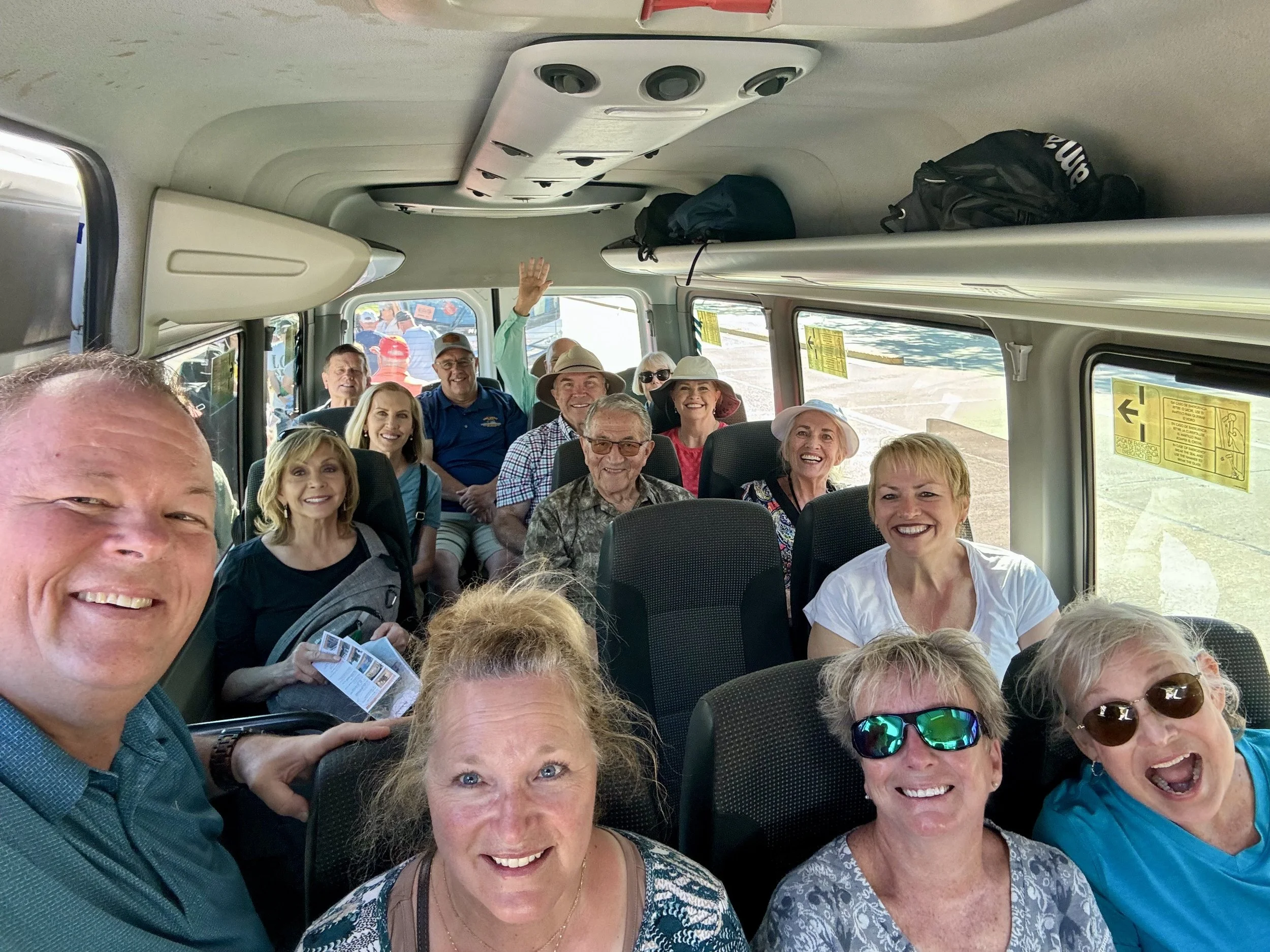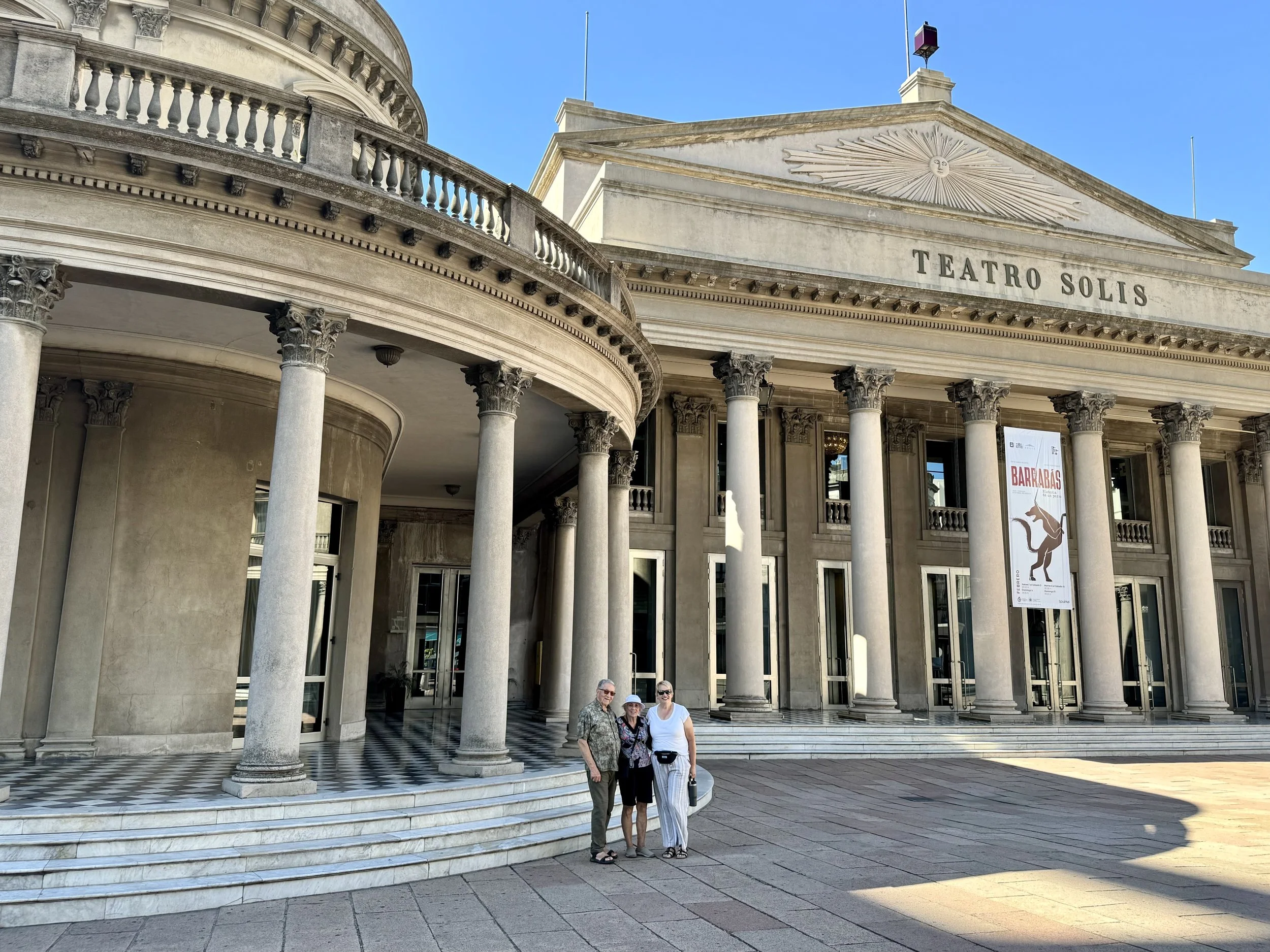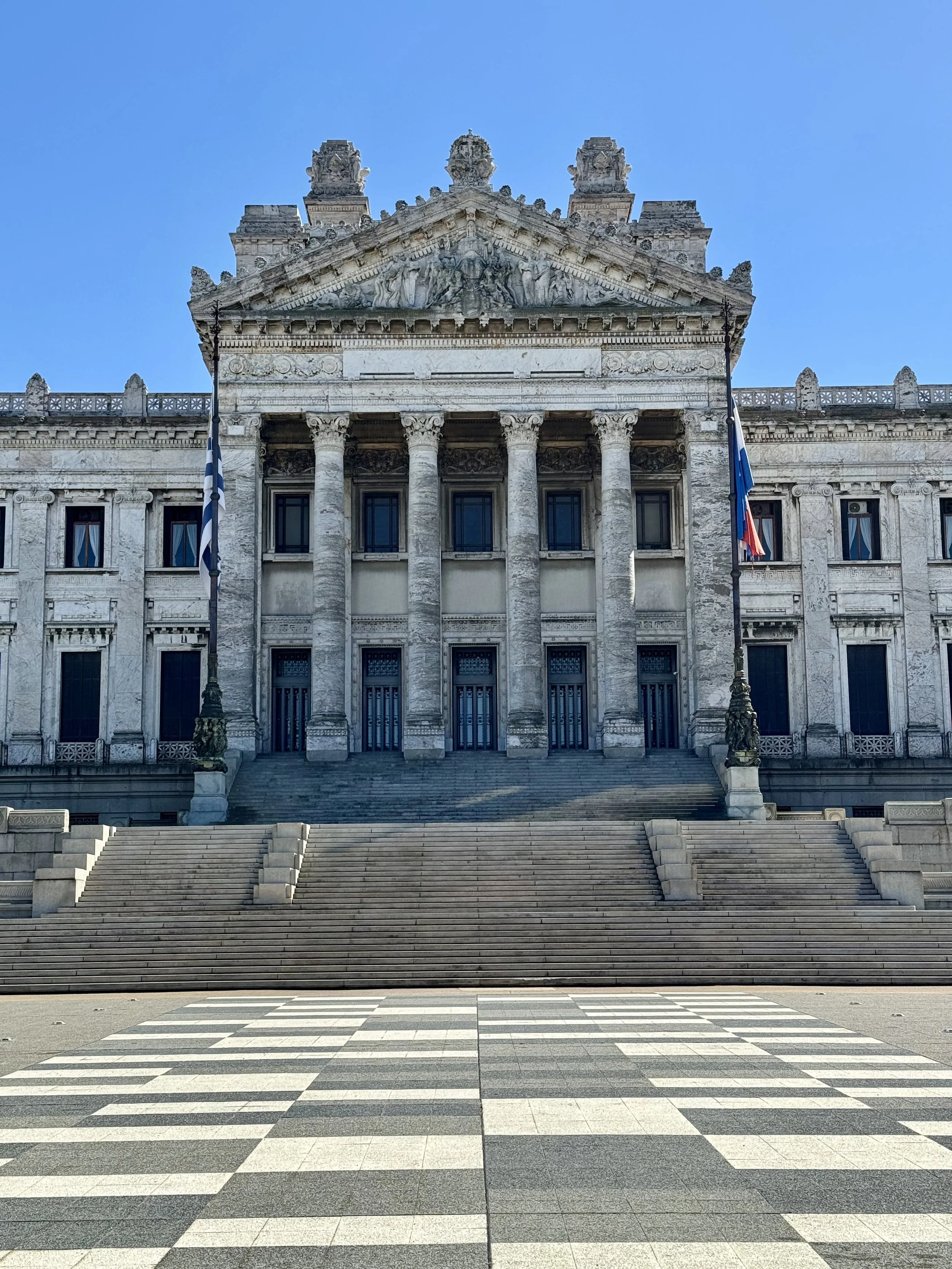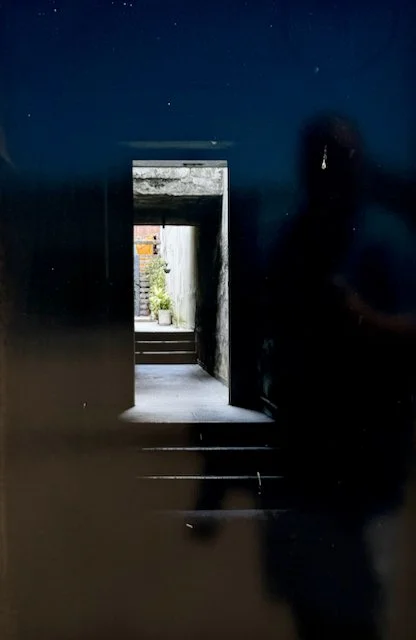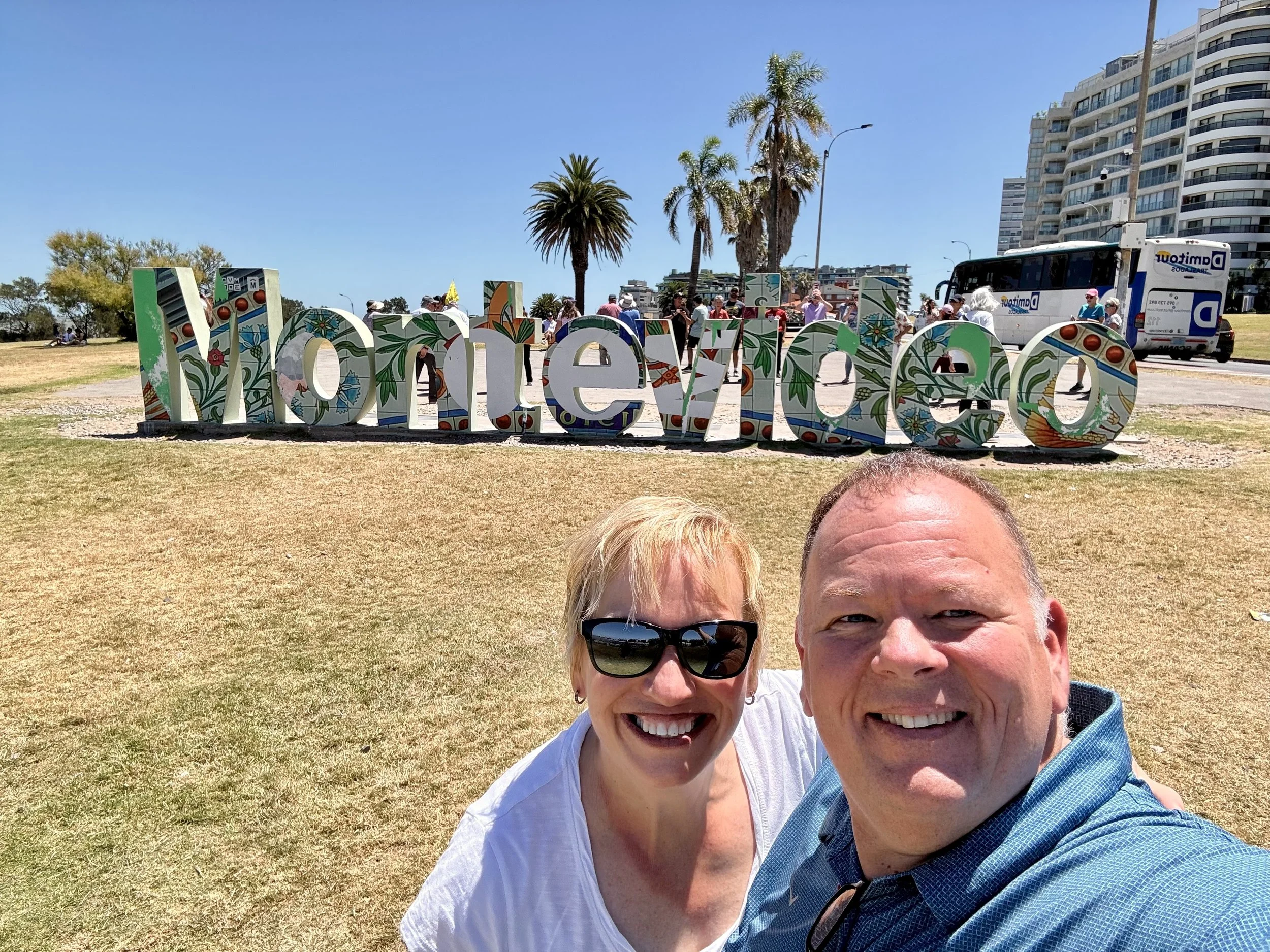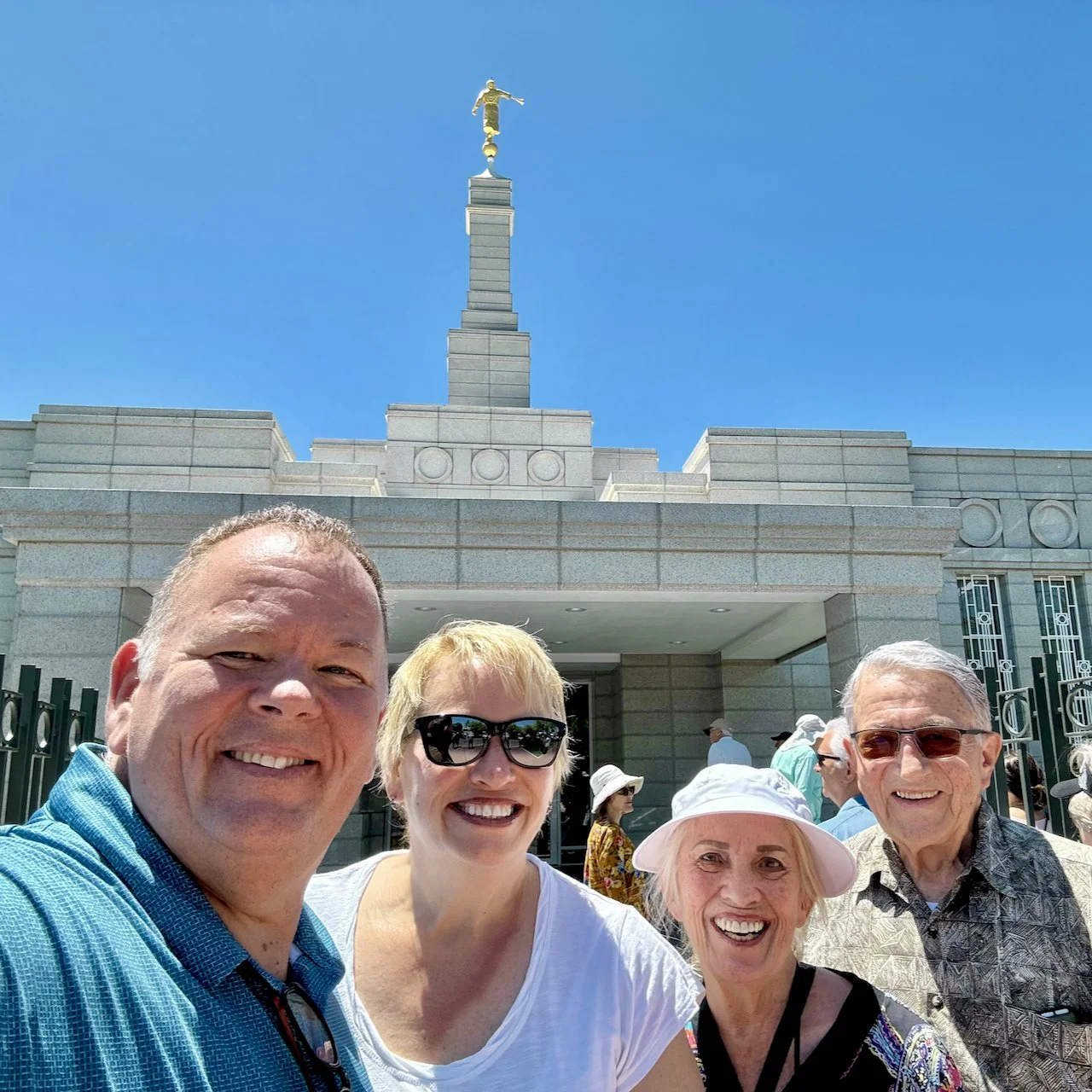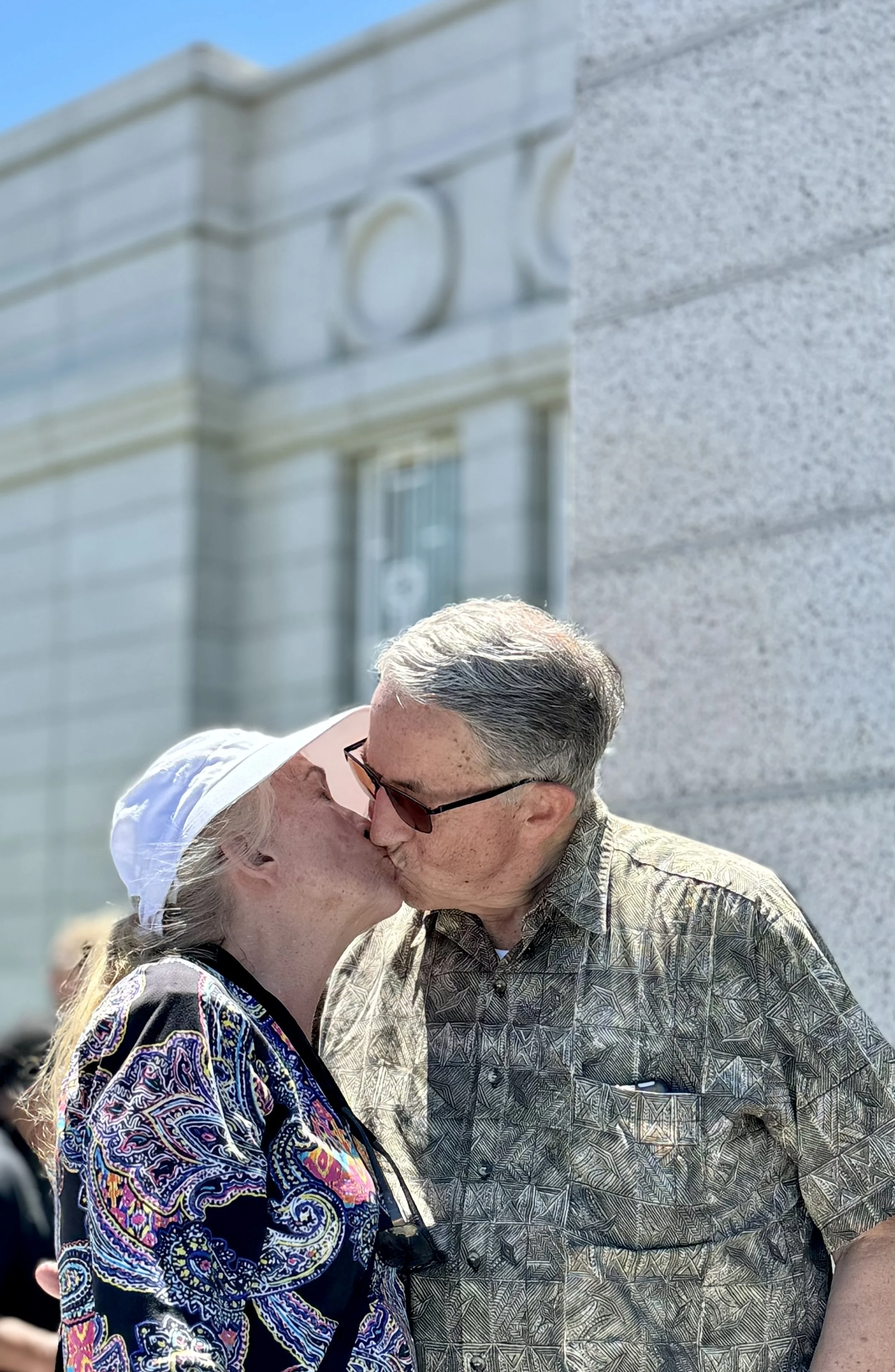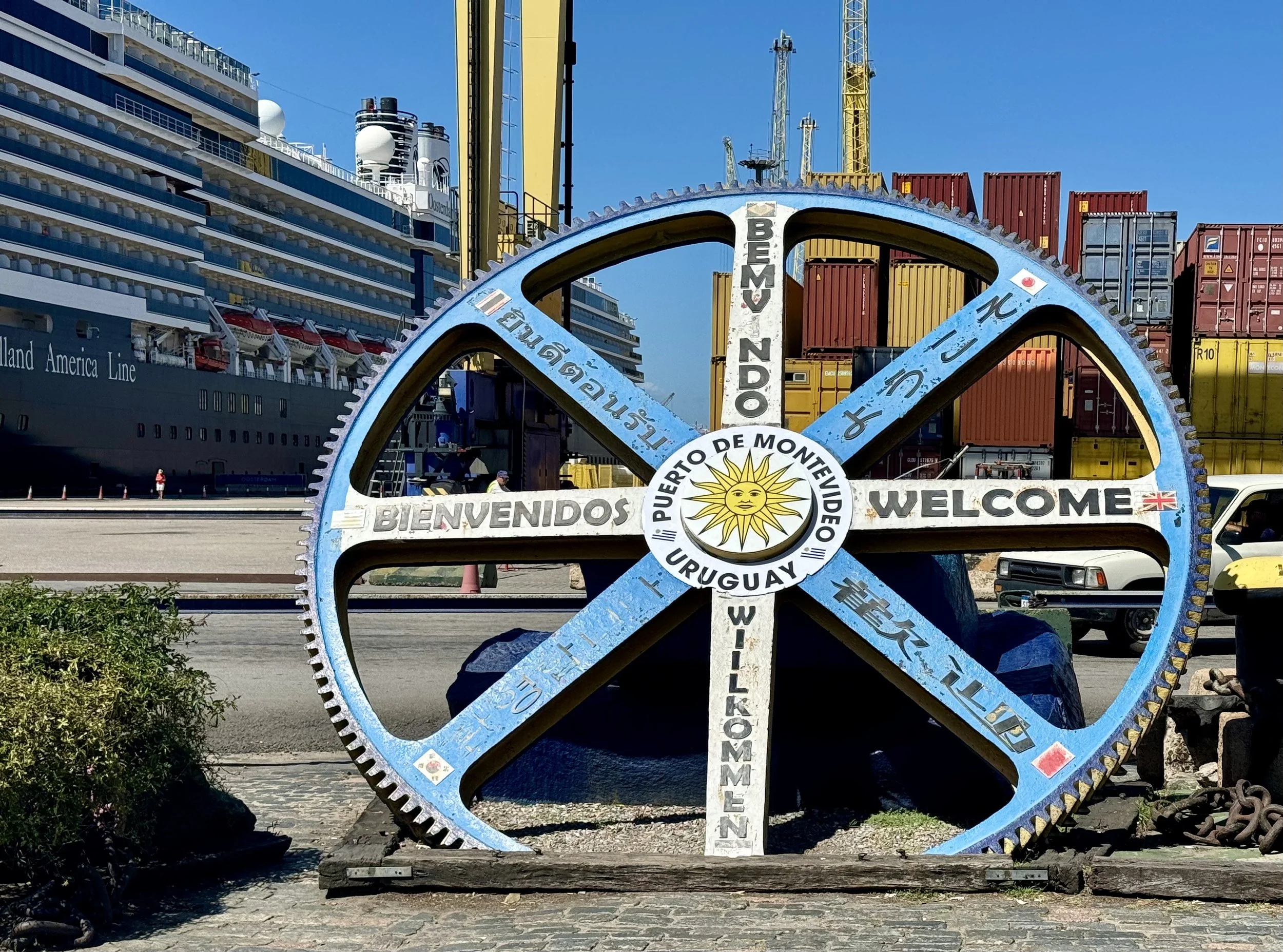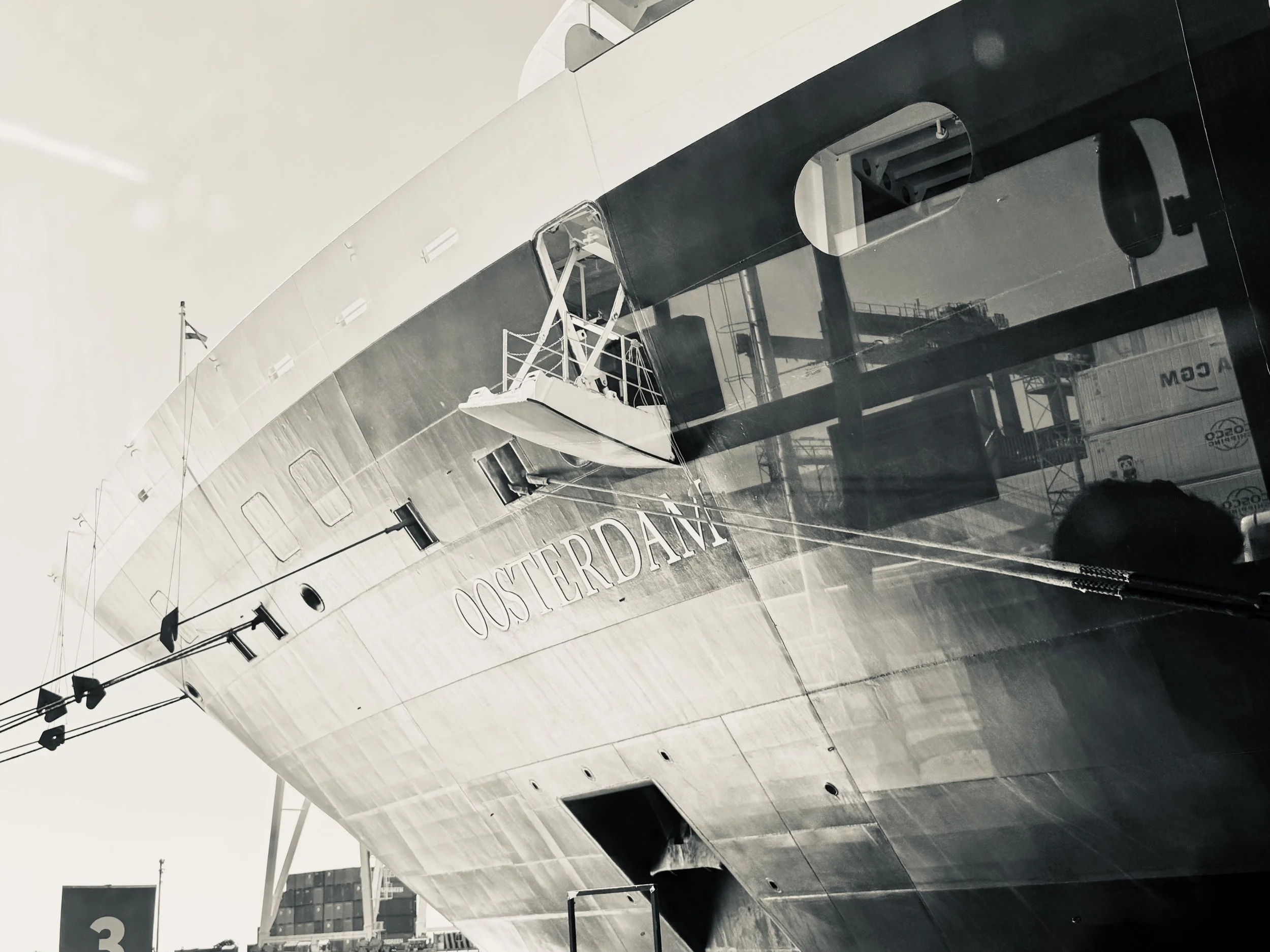Montevideo. The Capital & Chief Port of Uruguay.
Today we visit some of the key cultural and historical sites of Uruguay’s largest city. Due to the worst banking crisis in the country’s history in 2002, many parts of the city are transforming into something different than they were 25 years ago. It’s considered to be the southernmost cosmopolitan capital city of the America’s and described as a “vibrant, eclectic place with a rich cultural life” and is the hub of commerce and higher education in the country.
I love how the architecture of this city is intensely reflective of its history, ranging from colonial to art deco (a personal favorite), influenced by Spanish, Portuguese, Italian, French and British immigrants.
Before our first stop, I decided a rare selfie group pic of our new-found friends was in order… Jim & Lisa, Karen N, Shelley, Steve & Karen, Mark, and of course, the family!
We begin our venture at the Plaza Independencia, Montevideo’s most important plaza. We first see the gateway to the Citadel which was torn down but I love how they kept one wall, as an entry to this plaza. As I walk this plaza I just shoot most of the buildings around me as they’re each so quite different.
Palacia Salvo (above). Finished in 1928 was the tallest building in Latin America for a long time, designed by architect Mario Palanti, an Italian immigrant. It houses the Tango Museum of Montevideo and is mixed use now. The original designs were supposed to include a lighthouse on top with a 36-inch parabolic mirror and 100-watt lamp that would project light to the sea, 62 miles out.
While the guide took everyone around the plaza chatting in the square, Trina, mom, dad and I took off to go capture pictures of the beautiful theater on the corner and then walked up a back street.
Teatri Solis (below) is Uruguay’s most celebrated and renowned theater. It opened in 1856 and the building was designed by the Italian architect Carlo Zucchi. The theatre was named after the explorer Juan Díaz de Solis, who was the first European explorer to land in modern day Uruguay.
The Palacio Legislativo was a quick stop but I loved many of the architectural elements of this building, including the perfect symmetry of the grounds, approach, stairs, columns, doors and windows and just stood there, for a while, before shooting the picture. I attempted to capture from the center, to the inch but think I was just slightly off. This is the working place of the General Assembly of Uruguay and is on the countries national historic register.
Sculpture on the grounds of the legislative plaza (I liked the patina).
Then we make our first stop of two today at a giant marketplace in an old building filled with shops and restaurants, bars and bakeries, and place where people seem to congregate and be festive.
In a land with more cows than people (yes, 1 person for every 4 cows), Uruguayan food has a lot of beef and meat-related shops seemingly everywhere we visit We didn’t spend a ton of time here at the first marketplace because we’re going to spend more time at a larger and older location later. But, thought I’d share all the same. Later I will share the real experience of these festive gathering points as I failed to capture many images of this location.
One of my favorite stops, due to the rich history, was Estadio Centenario (below), even though we couldn’t see the stadium proper from the outside. The stadium built in 1929 was host to the very first FIFA World cup in 1930. It was named after the 100th anniversary of the Uruguayan constitution. In its first decades, it could hold just under 100,000 spectators which is extraordinary to think, in that era.
Since I couldn’t capture any image on the ground level that was worth sharing, I went hunting and was able to locate two images, from 1930 in the stadium archive, of the stadium during the actual FIFA World Cup (below).
This is still the primary home of the Uruguay National Team where their football matches are played and it’s amazing to me that today the capacity is 70,000 and almost 100 years ago it was 100,000. It is always a threat for visitors as they Uruguay consistently beat top teams here at home. Even the top ranked Brazil National Team has only won 3 of their last 20 opportunities (according to the guide) with two of those to include the official matches of the 2010 and 2018 World Cup qualification.
My two favorite photographic images on the grounds I captured (poorly due to light and reflection, with cameo) were:
Onto the iconic Montevideo sign on our way to the temple.
We arrive at the temple with the Angel Moroni shining, and the Uruguayan flag flying.
Never question the promptings!
Our final stop was a place I couldn’t take enough pictures of. And, a must-visit, in my opinion, if you visit Montevideo. Walking distance from the port, the Mercado del Puerto was first inaugurated in 1868 and long served as the city’s principal meat and produce market.
The clock located here (that I loved, obvious in the many pictures below) is almost as famous as the building itself. Constructed, like the entire market, in England and then shipped to Uruguay, the clock dominates the central hall of the cast-iron building. Now this market building houses amazing shops and popular restaurants serving typical Uruguayan dishes and we’re about to partake.
It’s 1:30 in the afternoon and it’s so festive, bustling, and energy-filled that I could just sit and people watch. In fact, dad and I did that for about 15 minutes since we lost the gals in here for a while. But we were starving and needed to pick a place amidst grills of meats and vegetables which were in view from every direction.
There’s musicians walking through and playing. Kids running. Breads baking. And again, grills a grilling. Everywhere.
With all that said, the building, and the light, captivate my senses in all the ways I enjoy. And, I’m thinking… I so glad I don’t have a camera with film or this would have been an expensive stop for me.
First image capturing the clock.
And then, it’s a short walk back to our ship with a few momento captures along the way.
As we return to the ship, we walk through the top of the 3-story atrium where a giant Waterford crystal globe (the heart of the ship) hangs from the ceiling, representing the 140 years of travel by Holland America. This is the largest Waterford crystal globe ever created and is many feet in diameter, and hundreds of pounds in weight, so you can only imagine how much it’s valued at when a 13 inch globe from Waterford currently goes for $30,000.
It’s a short trip from here to Buenos Aires tomorrow, in distance. But challenging for the captain due the shallow river channel he must navigate to get us to port.


